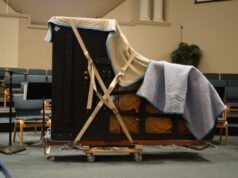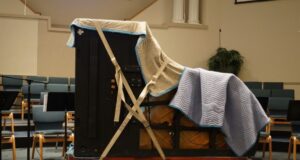Barrasso Introduces Bill to Reauthorize LWCF and Return Power to States
Bill reauthorizes LWCF for 10 years and restores original funding allocation split between state (60 percent) and federal (40 percent) purposes
WASHINGTON, DC – November 24, 2015 – (RealEstateRama) — U.S. Senator John Barrasso (R-WY) introduced legislation (S. 2318) this week to reauthorize the Land and Water Conservation Fund (LWCF) for 10 years and reestablish fair and equitable funding for states. The bill specifically returns to the original 1965 funding allocation split between state (60 percent) and federal (40 percent) purposes, resulting in more opportunities for citizens to enjoy a healthy lifestyle in their local communities.
“Many members of Congress and the administration have praised the original 1965 Land and Water Conservation Fund (LWCF) as a visionary or historic act. Over the years, the program funding shifted from being locally focused to being primarily Washington focused,” said Barrasso. “It’s time to return the LWCF back to its original intent of strengthening ‘the health and vitality’ of U.S. citizens. Giving states more control over decisions will give local land managers in Wyoming and other states the resources they need to increase local opportunities for outdoor recreation.”
“I greatly appreciate Senator Barrasso’s LWCF reauthorization bill that more closely resembles the intent of the original 1965 act,” said Domenic Bravo, President of the National Association of State Park Directors. “This bill places an emphasis on close-to-home recreation, where people can get outside and get healthy.”
Background:
The Land and Water Conservation Fund (LWCF) expired on Sept. 30, 2015. The original 1965 LWCF law authorized offshore oil and gas royalties to be split 60 percent for state purposes and 40 percent for federal purposes. In 1976, the 60 percent state purposes requirement was removed, leaving only the 40 percent minimum for federal purposes. According to the National Association of State Park Directors, prior to expiration, states were receiving approximately 12 percent of the funding.
According to an October 2014 Congressional Research Service (CRS) report, “The $16.8 billion appropriated throughout the history of the LWCF program has been unevenly allocated among federal land acquisition (62%), the state grant program (25%), and other purposes (13%).”
By returning to the original intent of the law, states and local governments can provide close-to-home recreational opportunities to strengthen the health and vitality of American citizens. The matching fund requirement also means states will be able to further leverage the 60 percent allocation into more recreation and conservation projects.
Senator Barrasso’s S. 2318 will:
Enable more local outdoor recreation opportunities, which have a greater impact on the health and wellness of individuals’ daily lives.
Promote healthy lifestyles by increasing the number of recreation opportunities (e.g. bike paths and jogging trails, playgrounds, green space, state and urban parks and forests, baseball and soccer fields, etc.) in both rural and urban neighborhoods.
Take a landscape-scale approach to ecosystem health and watersheds by helping states protect, conserve and maintain more than 18 million acres of state parks and forests, water resources, recreation sites and natural areas.
Increase the economic benefit to neighborhoods and communities with proximity to local LWCF projects as part of revitalization efforts.
###
















